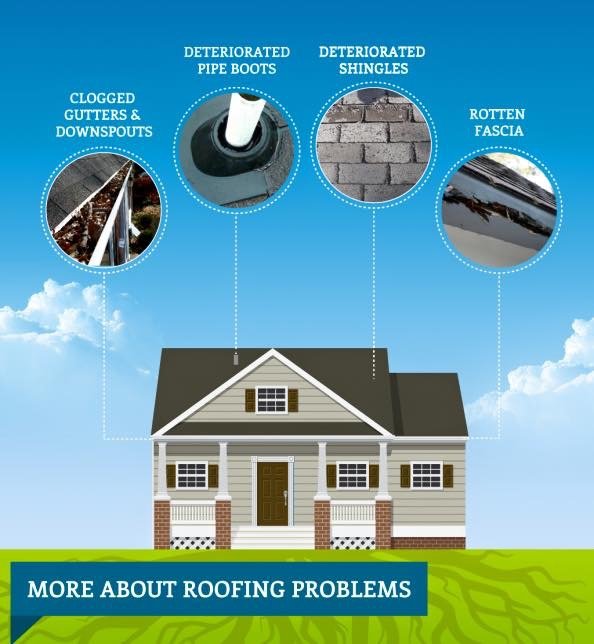The Duty Of Roof Air Flow In An Effective Installation
The Duty Of Roof Air Flow In An Effective Installation
Blog Article
Article Created By-Gundersen Rosa
When you're dealing with a roof covering task, you might not assume much concerning roof air flow, however it's even more critical than you realize. https://durolast-roofing-contract62849.kylieblog.com/33787363/are-you-asking-on-your-own-how-frequently-you-should-arrange-a-roofing-system-assessment-discover-the-unforeseen-risks-that-could-affect-the-wellness-of-your-roof manage temperature and moisture in your attic, protecting against problems like mold and structural damage. By recognizing how to design and install a balanced air flow system, you can improve energy effectiveness and prolong the life-span of your roofing materials. So, what are the key elements to consider during installment that can make all the difference?
Importance of Roofing System Air Flow
Roof ventilation plays a crucial role in maintaining the general wellness of your home. By enabling fresh air to circulate through your attic, it assists manage temperature level and dampness degrees. This equilibrium is vital to stop warm accumulation during hot months, which can cause enhanced power expenses as your cooling burns the midnight oil.
Moreover, appropriate air flow significantly decreases the threat of moisture-related concerns like mold and mildew and mold. If moisture levels climb, your home's architectural stability can be endangered, causing costly repair services. You wouldn't want to manage rotting wood or distorted roof materials, right?
Furthermore, sufficient air flow expands the life expectancy of your roof. When https://www.arlnow.com/2019/09/26/meet-frank-painter-of-painter-roofing-construction/ and wetness are kept in check, your roofing can do optimally, stopping premature wear and tear. This means less headaches and expenditures down the line.
Exactly How Roof Covering Air Flow Works
Reliable roof covering ventilation depends on the natural movement of air to produce an equilibrium between consumption and exhaust. When you mount vents, you're basically permitting fresh air to enter your attic room while enabling warm, stagnant air to get away. This procedure helps control temperature and wetness degrees, protecting against problems like mold and mildew development and roof damage.
Intake vents, typically located at the eaves, pull in awesome air from outdoors. At the same time, exhaust vents, situated near the ridge of the roofing, let hot air rise and exit. The difference in temperature develops an all-natural air movement, called the pile result. As cozy air increases, it develops a vacuum cleaner that draws in cooler air from the reduced vents.
To enhance this system, you need to ensure that the intake and exhaust vents are correctly sized and positioned. If the consumption is limited, you will not achieve the wanted ventilation.
Likewise, best roofer in san antonio tx can trap warmth and wetness, resulting in possible damage.
Key Setup Considerations
When mounting roof air flow, several crucial factors to consider can make or damage your system's effectiveness. First, you require to analyze your roof's style. The pitch, form, and materials all influence airflow and ventilation selection. Make certain to select vents that suit your roofing type and neighborhood environment conditions.
Next off, take into consideration the placement of your vents. Preferably, you'll want a balanced system with intake and exhaust vents positioned for ideal airflow. Area intake vents low on the roofing and exhaust vents near the optimal to urge an all-natural flow of air. This arrangement helps protect against wetness buildup and promotes energy effectiveness.
Do not forget insulation. Correct insulation in your attic room avoids heat from getting away and maintains your home comfortable. Make certain that insulation doesn't block your vents, as this can impede airflow.
Finally, think about upkeep. Choose air flow systems that are easy to accessibility for cleaning and evaluation. Normal upkeep guarantees your system remains to function effectively with time.
Verdict
In conclusion, roofing air flow is essential for a successful setup. By making sure appropriate air flow, you can protect against warmth buildup and wetness issues that result in expensive damages. When you tactically placement consumption and exhaust vents, you improve power efficiency and lengthen the lifespan of your roofing. Keep in mind, a well-ventilated roof not just safeguards your financial investment yet likewise boosts your indoor air top quality. So, prioritize air flow to guarantee a durable and cost-effective roofing system for your home.
